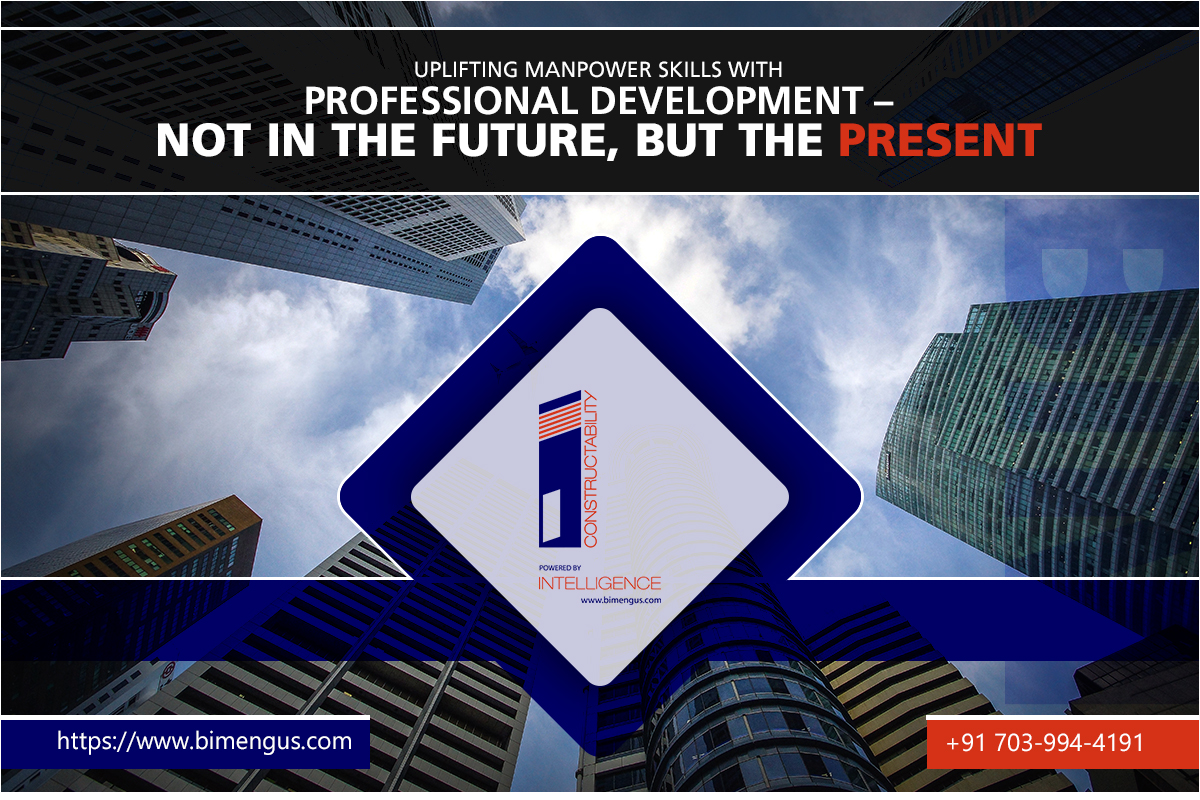Introduction
As we move forward into a highly competitive future, it is crucial for individuals and professionals to reinforce their working domain with leading edge skills to thrive and succeed. Professional or skill development is no longer a rarity, it’s a potential requirement. With disruptive trends, technology, and processes taking over, honing a specialized skill-set makes it easier for you to do what is actually expected of you, or something that piques your interest.
The construction sector on a global level is one of the fastest growing sectors in every country for people, companies and professionals. Furthermore, if construction enterprises need to thrive, they do require skilled professionals to build a robust platform that is capable of working on a global level. The potential impact of rapid changing technology on an individual’s career shows considerable influence.
Leverage new mechanization
Moving from traditional workflows to efficient one’s using modern processes and technology takes construction to an all new level. Legacy processes in construction never took into consideration the value of “data” or “information” gathering, sharing, and analysis. This is where Building Information Modeling (BIM) makes a substantial stand.
Adoption of BIM with tools or software like Revit, Navisworks, Laser Scanners, IoT, or autonomous systems boosts project efficiency, productivity, and reduces turnaround times thereby cutting down on costs and construction waste.
Offering various skill-set training programs for professionals expands the scope of an enterprise to take-in global projects and showcases their services and solutions. There are various job roles in the construction sector that require specialized skills-sets viz. General Laborers, Surveyors, Project Managers, Civil Engineers, Production Managers, etc.
The importance of learning
Making technology education available at every corner of the globe is crucial as trends in construction are quite mixed and definite as well. With BIM adopted early on in the project lifecycle, gives exceptional long-term benefits.
Since labor constitutes a very large part of construction, it is critical to monitor their productivity; also called as labor productivity. Labor productivity is not a measure of their capabilities, but the ability to transform work through overall effectiveness. For example – Buying a piece of equipment for a laborer can enhance labor productivity as technology has always complemented human intelligence and physical aspects as well.
Owners and Contractors are often concerned about labor activity in terms of their skill-sets, safety, and more. Monitoring labor productivity at low-level measures assesses productivity of an individual, but making a large-scale impact can be used to derive global industry standards.
Self-paced learning or e-learning is playing an important part in training professionals for various skill-sets. This approach makes it easy for professionals to learn in their own time, and achieve the necessary skills to thrive in a fast-paced construction sector. Numerous enterprises understand the significance of providing on-job training for individuals to make them perceive the depth of actual project execution.
Factors that affect on-site productivity
- Age – Skill – Experience
- Leadership and Incentives
Other factors that influence jobsite productivity would be listed as –
- Project Size
- Complexity
- Labor skills or availability
- Equipment application
- Contracts
Taking brilliant and visionary professionals and turning them into high-level project management individuals is one of the most crucial driving forces for an AEC firm to grow. Upgrading to a high level of project management requires laser-focus training on people management, technical skills, forward looking vision, empathy, and a will to make significant changes in work and society. Enterprises hire gold-standard project management individuals to lead and create a firm vision that works in the best interest of the people and the company.
In Summary
Skilled workforce is in high demand, and there is substantial shortage of skilled professionals. This challenge has got enterprises from all over the globe to bring in training programs that specifically work on industry-based scenarios. With the adoption of new processes and technology, it is important to get in the best talents who have the ability to stir up exceptional results through skill based training. It will be interesting to see how enterprises can close the gap of skilled workforce shortage and continue to thrive in a competitive AEC market.
